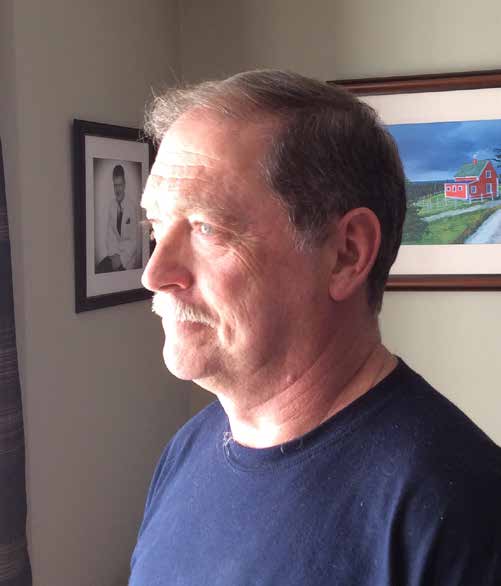by Alex A. Power
My first fatality that I was indirectly involved with happened in January. I had been with the OH&S Division six months. I was conducting inspections in my area on Friday, January 5, when I happened across two individuals working at height with no fall protection, in a new residential subdivision. As usual, I stopped, got out of my vehicle, and called both workers off the roof of the building. I introduced myself and explained the legislative requirements for working at height. The two gentlemen showed me what they had on site for fall protection. Everything met the requirements for fall protection equipment. Finally I asked to see their anchor point device, a piece of equipment used to anchor workers to the physical structure. Neither worker had such a device with them, so a Stop Work Order was issued. I told them no further work was permitted to be undertaken at this location until the devices were on site and a follow-up inspection was conducted by myself or another officer to verify the devices met the legislative requirements.
Monday, January 8 at around 9:00 a.m. one of the men was dead. Every detail of that, and the other incidents I’ve been involved with over the years, are as clear in my memory today as it was on the day of each of the incidents.

Alex Power is a retired Occupational Health and Safety Officer in Newfoundland and Labrador. He welcomes anyone who may want to talk to him about his experiences to reach out to him on Facebook Messenger or via email at: newfoundlandscout (at) hotmail (dot) com
I had come from a background of Architectural Drafting (CAD) with the Department of Transportation and Works and was well versed in the workings of construction sites, how things evolved into a finished project, the relationships between trades and specialties involved in various projects. It was on those sites that I learned the nuances of getting the project done, on time, on budget, no matter the cost. Everyone accepted this as industry standard, and learned to work within the system. Accident numbers that were reported were high; untold numbers were never reported due to high insurance costs, project delays, project shutdowns and penalties.
I decided to attend Algonquin College, Occupational Health and Safety Program and graduated with an Honours Certificate, an achievement I am very proud of to this day! Upon graduation I applied for an internal position as an Occupational Health and Safety Officer 1, basically a training position. Like every newbie I was paired with several of the senior officers to learn the art of being an OH&S Officer. At first it was pretty low key, residential construction, road work, excavation sites, learning who the players were, how to deal with clients, employees, union representatives and government department management and staff. After six months or so I was finally sent off into the world of workplaces and told to keep myself and everyone I came in contact with as safe as I possibly could, and keep my monthly inspection numbers above expectations given the workload I may encounter, and the complexities of the files I may end up dealing with.
After that first fatality, a fellow officer with far more experience and expertise was assigned to investigate, but I was left wondering if I had done everything I could have to prevent this tragic and preventable loss of life. As an officer you know you actually did what you could and were required to do but, you are still left wondering. Wondering about the tragic loss of life, the family of the person you’d spoken to only a few short days prior, realizing, this person is never coming home again, will never share another birthday, anniversary, or Christmas, will never hold his wife, children or grandchildren again and how senseless this tragedy and others like it are.
Following a workplace accident/incident or fatality, Occupational Health and Safety Officers are assigned to the file, tasked with finding out what happened from a causation perspective and determine if there is enough evidence to bring charges against a company or individual under the Occupational Health and Safety Act and Regulations. The officer will arrive on site, meet with witnesses, take photographs and measurements, confiscate tools and equipment as evidence if needed, obtain records from the employer, such as policies, procedures, training records, equipment documentation if required, and put together a comprehensive file before presenting it to her/his manager. These officers, like myself, will remember the worksite conditions, the locations of tools and equipment, the people on site at the time, their states of emotion; they will remember the weather conditions, the temperature, and a thousand other little details. But first and foremost they will remember they are there because someone will not be going home at the end of their shift today.
I retired from the Department of Service NL, Government of Newfoundland and Labrador after 32 years, the last 13 years or so as an OH&S Officer II. The fatalities and serious injuries I investigated are a sad testament that play heavily on an officer. Every time the file is opened, all the memories come flooding back. You spend countless hours reviewing every detail hoping you haven’t missed anything that can lead to resolving what happened. You know someone’s family is relying on you to give some kind of closure to the tragedy that has befallen their daughter, son, wife, husband, mother, father, grandmother or grandfather and that corrective action can be implemented to prevent the same thing from happening again to some other innocent worker. It’s a responsibility that weighs heavily on an Occupational Health and Safety Officer and everyone involved in workplace fatality.
- In Profile: Thunder Bay Steps for Life Committee - March 7, 2025
- Help us spread the Safety Message! - March 5, 2025
- Taking the first step for Steps for Life - February 6, 2025

 Find Support
Find Support Donate
Donate